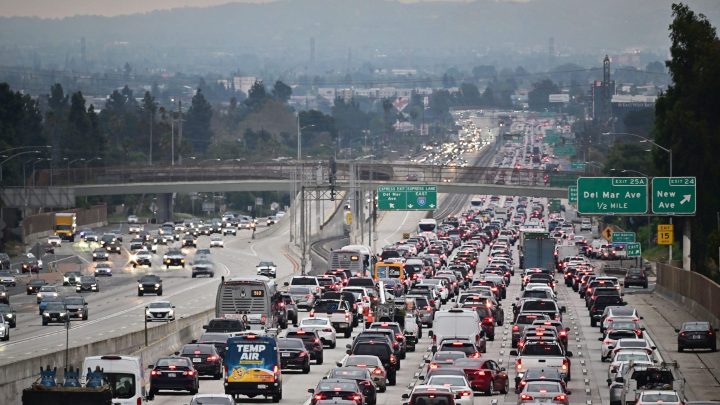
Highways isolate urban communities nationwide. $3 billion from Washington aims to fix that.
Highways isolate urban communities nationwide. $3 billion from Washington aims to fix that.

There are highways that run through cities in this country that go straight through the hearts of neighborhoods with majority-Black and Latino populations — in Chicago, New York, Los Angeles and lots of other cities.
This week, the Department of Transportation announced more than $3 billion in grants from the Bipartisan Infrastructure Law and the Inflation Reduction Act to help reconnect some of those communities.
There are many reasons why America’s infrastructure disproportionally cuts through communities of color.
“Some of it is overtly racist decisions,” said Ben Crowther, who serves as policy director for America Walks, a nonprofit supporting walkable communities. “Some of it is … highway engineers following the path of least financial resistance. These are the places where it’s cheap to acquire property because of institutional decisions like redlining that has depreciated homes in these neighborhoods.”
And those choices decades ago have had lasting consequences, said Christopher Coes, an assistant secretary at the Department of Transportation.
“These communities today, they generally have higher health impacts. Many communities have higher asthma rates,” Coes said. “These are communities that are oftentimes our most disconnected from jobs or everyday destinations like health care.”
The DOT grants include projects to put “caps” over stretches of highway that can be converted into parks.
“This might create a bridge, for example, that goes directly over the interstate or under the interstate to be able to connect those communities and what would be a, maybe a 10-minute trip or a 15-minute trip is now a two- or three-minute trip,” said Robert Blaine, a senior executive at the National League of Cities.
Even though advocates say these grants mark a historic investment in infrastructure equity, they come at the same time other state and federal infrastructure investments are perpetuating trends of the past, said Yonah Freemark, a researcher at the Urban Institute.
“We’re talking about over $100 billion a year on maintaining and expanding the highway system, and so $3 billion in one year to reconnect communities is quite small,” he said.
Freemark said these grants are a good first step, but that there is much more to do to address the historical harms undergirding America’s highways.
There’s a lot happening in the world. Through it all, Marketplace is here for you.
You rely on Marketplace to break down the world’s events and tell you how it affects you in a fact-based, approachable way. We rely on your financial support to keep making that possible.
Your donation today powers the independent journalism that you rely on. For just $5/month, you can help sustain Marketplace so we can keep reporting on the things that matter to you.

















